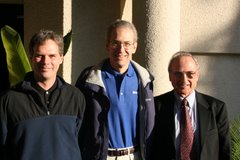I'm very excited about the upcoming aquifer testing course entitled
Advanced Aquifer Testing Techniques Featuring AQTESOLV: New Concepts, Field Methods and Data Analysis Procedures to be held in Baltimore, Maryland, USA on April 24-26, 2012. It's the first time that we've offered the three-day course in the USA since 2009.
The instructors at this year's course will include
Dr. Jim Butler of the Kansas Geological Survey,
Dr. Shlomo Neuman of the University of Arizona and myself. Dr. Butler is well known for his essential book
The Design, Performance and Analysis of Slug Tests as well as numerous papers on pumping tests and slug tests. Dr. Neuman, who will be a special guest instructor at the course, is acclaimed for his important contributions to the published literature on the interpretation of pumping tests in unconfined and leaky confined aquifers. I'll be on hand to give personalized instruction on the use of
AQTESOLV.
We'll be holding the course at the
Camden Yards Conference Event Center in Baltimore's very attractive Inner Harbor area. Camden Yards is the highly regarded ballpark of the
Baltimore Orioles; as a bonus, course participants will have a special opportunity to attend an evening baseball game on Day 2 of the course.
For more information and to register for the course, please visit the Midwest Geosciences
web site. I hope that you can join us!





